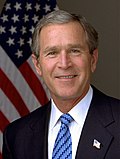 | |
| Long title | An Act to amend the Federal Water Pollution Control Act to address certain discharges incidental to the normal operation of a recreational vessel |
|---|---|
| Acronyms (colloquial) | CBA |
| Enacted by | the 110th United States Congress |
| Citations | |
| Public law | 110-288 |
| Statutes at Large | 122 Stat. 2650 |
| Codification | |
| Acts amended | Federal Water Pollution Control Act |
| Titles amended | 33 U.S.C.: Navigable Waters |
| U.S.C. sections created | 33 U.S.C. § 1322(o) |
| U.S.C. sections amended | 33 U.S.C. § 1342, 33 U.S.C. § 1362 |
| Legislative history | |
| |
The Clean Boating Act of 2008 (CBA) is a United States law that requires recreational vessels to implement best management practices to control pollution discharges. The law exempts these vessels from requirements to obtain a discharge permit under the Clean Water Act (i.e. they are exempt from coverage under the EPA Vessels General Permit). [1] [2]
The CBA amended the Clean Water Act (CWA) and directs the U.S. Environmental Protection Agency (EPA) to develop performance standard regulations. The regulations will not apply to sewage discharges from recreational vessels, which are already regulated under the CWA. (See Marine sanitation device.) [3] [4] The CBA designated the U.S. Coast Guard as the enforcing agency. [3]
In 2011 EPA conducted public meetings to obtain public comment about developing CBA regulations. [5] As of 2020, EPA has not announced a schedule for issuing the regulations. [3]

